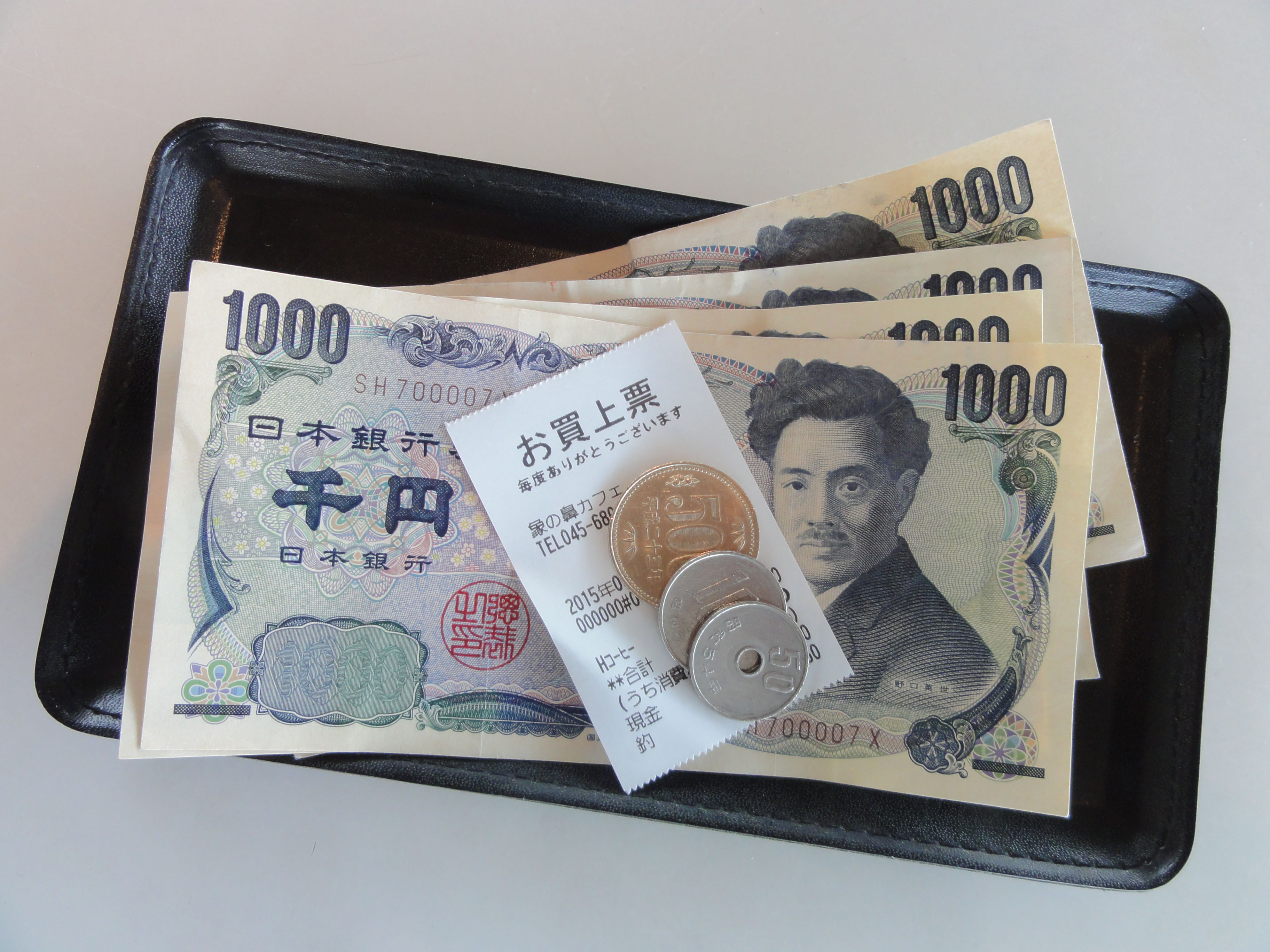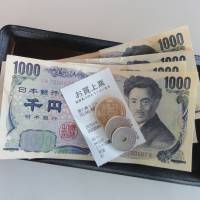Dear Alice,
I am very curious about those small trays that are used in Japan when settling daily cash transactions. Instead of handing your payment to the clerk, or setting it on the counter by the cash register, here you are generally expected to put your payment into a tray that is presented expressly for the purpose. The clerk takes it away and returns it with your change. In restaurants, the check is often delivered on a rectangular tray made of leather, while in banks and post offices, the trays are usually plastic. So, what the heck are these trays called? And what is their origin and purpose?
Bernard T., Tokyo
Dear Bernard,
I have to say, I had a lot of fun with this question, mostly because it took so many people by surprise. Pretty much everywhere I posed it, I got responses like, "Ehh, nandarō!?" ("Gee, what are they called?"). Or, "Shojikina tokoro, kangaeta koto wa nai." ("To be honest, I've never given them any thought.") People seem to pay into the trays every day, yet never pay them a second thought.
I started my research at the Currency Museum in Tokyo, figuring that an institution devoted to the study of money was sure to have to have a ready answer. But much to my surprise, and despite the fact that the trays are in use in virtually every bank in Japan, the museum doesn't have a single example in its collection. Nor does it have documents referring to them.
"It's an interesting question," the curator I spoke to allowed, "but I'm not aware of any records on the subject." He suggested I inquire across the street at the museum's parent organization, the Bank of Japan.
I was pretty sure the venerable BOJ had more important matters to attend to, but I gave it a try. A public-relations officer kindly agreed to look into the question, but two days later, after what sounded like an exhaustive search, he called back with apologies.
"I'm afraid we have no information at all," he said. "This is a piece of banking history that seems to have slipped through the cracks."
Although no one pays much attention to these trays, they carry a veritable payload of names, as I learned by consulting the professional-supply shops that sell them. Tsurisen torei (change tray) is one common moniker. Kaikei-bon (settlement tray) is another. Some suppliers sell them simply as koin torei (coin tray). But the name that really surprised me is karuton, which comes from the French word "carton." (In French, "carton" originally referred to the pasteboard used for making paper boxes, but was later extended to refer to the boxes themselves, as well as other objects made from pasteboard.)
Fortunately, this discovery gave me a new angle to work on. First, I consulted dictionaries to see when the word "karuton" entered the Japanese language, hoping this would give me a clue as to when the trays themselves were adopted. The earliest reference I found was in a tome titled "Atarashii Kotoba no Jibiki" ("A Dictionary of New Words"), published in 1918. The entry, which I'll translate, reads: "A round tray into which merchants put change. Recently, a type has become available with rubber on the bottom so coins won't jangle around."
So now I knew for certain that these little trays were in use for almost a hundred years ago. But was it possible their use was a much older custom? Not likely, according to Yuji Tanaka, a curator at the Edo-Tokyo Open Air Architectural Museum.
"During most of the Edo Period (1603-1868), only the lowest order of itinerant merchants took payment immediately," Tanaka explained. "Virtually all other merchants did business on credit."
Typically, shopkeepers would make collections twice a year — during the o-Bon season in the summer and again at the end of the year. Clients would hand over their payment wrapped and in paper, and it would have been unseemly for the merchant to open the package in front of the client to confirm the amount was correct. There was no custom of making change.
But in the early 18th century, a shop called Echigoya, which later evolved into today's Mitsukoshi Department Store, introduced fixed pricing in exchange for payment on the spot. Trumpeted under the slogan "Genkin kakene nashi" ("Cash sales, no bargaining!"), the idea proved popular with customers but, even so, the competition continued to work on credit.
Many decades later, the same company experimented with keeping goods constantly on display, which was a radical departure from the usual sales method of za-uri (seated sales), in which a customer would sit at the front of the shop and the merchant would bring goods out of a store room one by one for the customer to examine. By 1900, the company had switched all its branches over to cash sales of goods on display, and gradually other merchants followed suit. Cash transactions became more common. Tanaka surmised that change trays were adopted sometime after these changes in the market, but couldn't say precisely when or by whom.
I decided to set history aside and focus on the reasons the trays are so widely used. The cashiers I interviewed all agreed that the trays are convenient because there's less risk that someone will drop a coin and set off a scramble to retrieve it. The trays also make it possible to spread out the bills and coins so customers can see at a glance that they've been given the correct change. And as one shopkeeper explained it, offering change in a tray feels more polite than simply placing money in a customer's hand. "Japanese prefer not to touch other people's hands and the tray creates desirable distance," he commented. "So you could say that using a tray is an expression of reserve as well as an extension of good customer service."




















With your current subscription plan you can comment on stories. However, before writing your first comment, please create a display name in the Profile section of your subscriber account page.